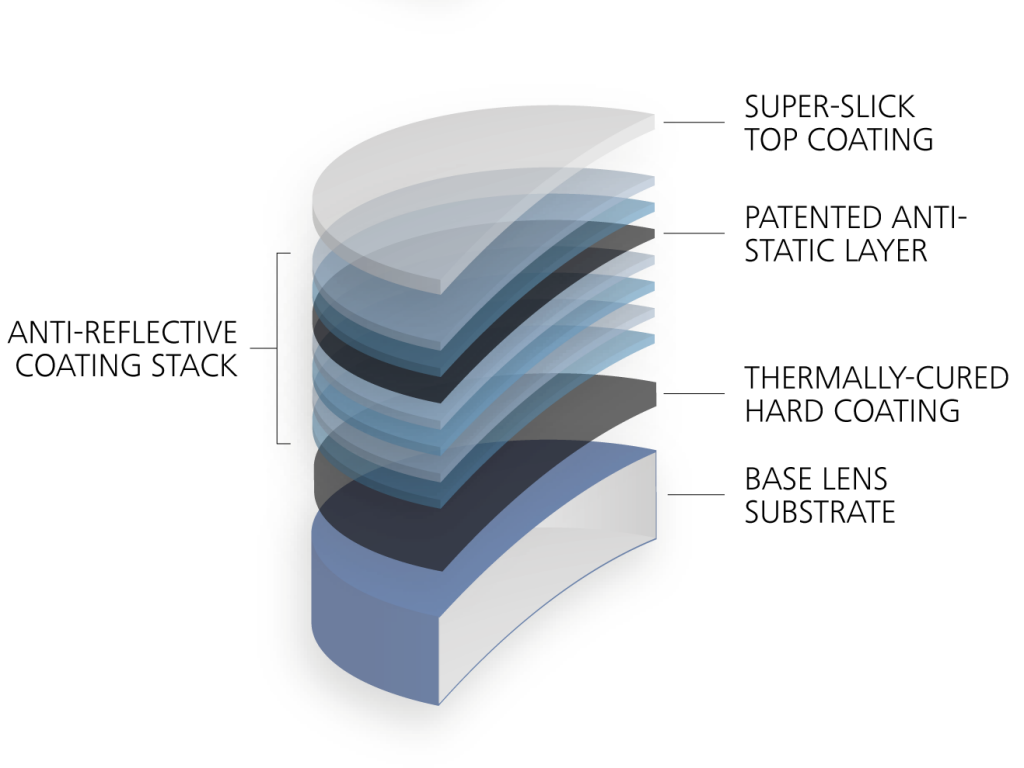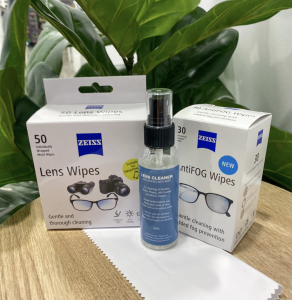Are you tired of constantly battling with annoying glares and reflections on your eyewear? Look no further! In this digital age where screens are everywhere, finding the perfect pair of eyewear that not only enhances your vision but also adds a touch of style to your overall look is essential. Antireflective coatings – the secret weapon that can transform your eyewear experience. These advanced coatings not only reduce glare and reflections, but they also enhance the aesthetics of your glasses, making them look sleek and stylish. Whether you’re a fashion enthusiast or someone who simply wants to enjoy crystal-clear vision without any distractions, antireflective coatings are the must-have accessory for your eyewear. We’ll delve deeper into how these coatings work, the benefits they offer, and why they have become a game-changer in the world of eyewear. Get ready to find your perfect pair and elevate your eyewear game to a whole new level!
What are antireflective coatings?
Antireflective coatings, also known as AR coatings, are thin layers of material applied to the surfaces of eyeglass lenses. These coatings are designed to reduce the amount of light reflected off the lenses, thereby minimizing glare and improving the clarity of vision. The technology behind antireflective coatings is based on the principle of interference, where multiple layers of materials with different refractive indices are applied to the lens surface. This creates a thin film that cancels out the reflections by allowing the maximum amount of light to pass through the lens.
Antireflective coatings are typically made up of multiple layers of metal oxides, such as titanium dioxide and magnesium fluoride. These materials have a refractive index that is lower than that of the lens material, allowing them to effectively reduce reflections. The coatings are applied using a vacuum deposition process, where the lens is placed in a chamber and the coating material is evaporated and deposited onto the surface. This process ensures a uniform and durable coating that adheres to the lens without affecting its optical properties.
Antireflective coatings have evolved over the years, with advancements in technology leading to the development of more advanced coatings that offer enhanced performance and durability. These coatings can now be applied to a wide range of lens materials, including plastic, polycarbonate, and high-index materials, making them suitable for all types of eyewear.
The importance of antireflective coatings in eyewear
Now that we understand what antireflective coatings are, let’s explore why they are so important in the world of eyewear. One of the primary reasons is the reduction of glare and reflections. Glare is caused by light bouncing off the surface of the lens, which can be particularly problematic when using electronic devices or driving at night. Antireflective coatings significantly reduce these reflections, allowing for better visibility and reduced eye strain.
Another key benefit of antireflective coatings is the improvement in visual clarity. When light is reflected off the lens surface, it can create ghost images or halos around objects, especially in low-light conditions. This can distort vision and make it difficult to focus. By minimizing reflections, antireflective coatings provide sharper and more accurate vision, allowing you to see the world with greater clarity.
Benefits of antireflective coatings for eyewear
Antireflective coatings offer a wide range of benefits that go beyond just reducing glare and improving visual clarity. Let’s take a closer look at some of the key advantages of incorporating these coatings into your eyewear:
- Reduced eye strain: By minimizing reflections and glare, antireflective coatings reduce the amount of light that enters your eyes. This can significantly reduce eye strain, especially when using electronic devices or working in environments with bright lighting.
- Improved contrast: Antireflective coatings enhance the contrast of your vision by reducing the reflections that can wash out colours and details. This is particularly beneficial when reading or engaging in activities that require precise visual perception.
- Better night vision: Driving at night can be challenging due to the glare from oncoming headlights. Antireflective coatings reduce this glare, allowing you to see more clearly and comfortably while on the road.
- Enhanced visual acuity: By eliminating reflections, antireflective coatings improve the overall sharpness and clarity of your vision. This can be especially beneficial for those with higher prescriptions or specific vision needs.
- Improved aesthetics: As mentioned earlier, antireflective coatings make your eyewear look sleek and stylish. The reduction in reflections creates a clean and polished appearance, allowing your eyes to take centre stage.
In the following section, we’ll explore how antireflective coatings enhance the aesthetics of eyewear in more detail.
How antireflective coatings enhance the aesthetics of eyewear.
When it comes to eyewear, style is just as important as functionality. Antireflective coatings play a significant role in enhancing the aesthetics of your glasses, making them look more attractive and fashionable.
Here are some ways in which antireflective coatings elevate the overall look of eyewear:
- Invisibility: One of the most noticeable effects of antireflective coatings is their ability to make the lenses appear almost invisible. By reducing reflections, the lenses become more transparent, allowing your eyes to be the focal point. This creates a clean and minimalist look that complements any outfit or style.
- Sleek and modern: The reduction in reflections not only enhances transparency but also gives the lenses a sleek and modern appearance. This clean and polished look adds a touch of sophistication to your eyewear, elevating your overall style.
- 3. Photogenic: If you’ve ever taken a photo while wearing glasses, you may have noticed the reflections on the lenses. Antireflective coatings eliminate these reflections, making your glasses more photogenic. Now you can confidently capture moments without worrying about distracting glares in your photos.
Tips for maintaining and cleaning eyewear with antireflective coatings.
Proper maintenance and cleaning are essential for preserving the performance and aesthetics of your eyewear with antireflective coatings. Here are some tips to help you keep your glasses in pristine condition:

- Use a microfiber cloth: When cleaning your glasses, always use a microfiber cloth specifically designed for eyewear. Avoid using tissues, paper towels, or
- Avoid harsh chemicals: Refrain from using harsh chemicals, such as ammonia-based cleaners or window cleaners, as they can damage the antireflective coating. Instead, use mild soap or lens cleaning solutions recommended by the manufacturer.
- Rinse before cleaning: Before wiping your lenses, rinse them with lukewarm water to remove any debris or particles that could scratch the coating. This step helps prevent unnecessary damage during the cleaning process.
- Handle with care: When not in use, always store your glasses in a protective case to prevent accidental scratches or damage. Avoid placing them face down on hard surfaces or exposing them to extreme temperatures.
By following these simple tips, you can ensure that your eyewear with antireflective coatings remains in excellent condition, allowing you to enjoy the benefits for years to come.
Common misconceptions about antireflective coatings
Despite the numerous benefits and advancements in antireflective coatings, there are still some misconceptions and myths surrounding their use. Let’s debunk a few of these misconceptions:
- Antireflective coatings are only for people with high prescriptions: Antireflective coatings are beneficial for everyone, regardless of their prescription. Whether you have a mild prescription or perfect vision, these coatings can enhance your visual experience by reducing glare and reflections.
- Antireflective coatings make lenses more prone to smudges: Antireflective coatings are designed to repel smudges and fingerprints, reducing the need for constant cleaning. However, it’s important to note that no coating is entirely smudge-proof. Regular cleaning and proper handling can help maintain the cleanliness of the lenses.
Zeiss DuraVision® Platinum Antireflective Coating
What makes ZEISS lenses with DuraVision® Platinum AR coating different? These hard, light lenses are very robust, dirt-resistant and easy to clean while offering  first-rate anti-reflective properties.
first-rate anti-reflective properties.
DuraVision® Platinum is the latest in advanced coating technology. It consists of an integrated system of nine coating layers, densely packed using a unique ion-bombardment production process which results in a lens surface that is incredibly hard and robust.
In fact, lenses coated with DuraVision® Platinum are the hardest ZEISS lens to date, over 35 % harder than AR coated mineral (glass) ZEISS lenses and with excellent scratch-resistance properties.
Make sure to include a ZEISS DuraVision Platinum coating on your next pair of glasses!








